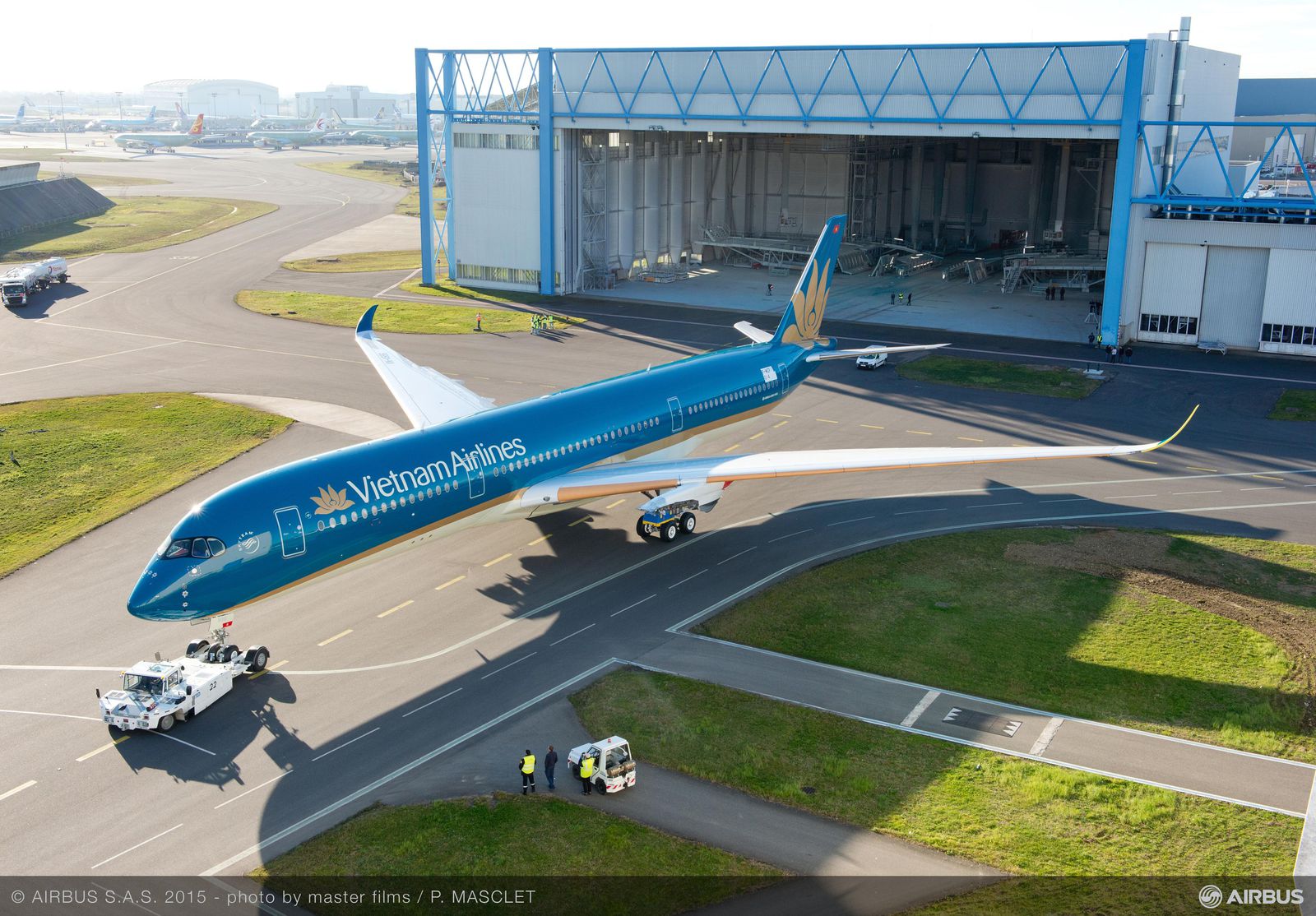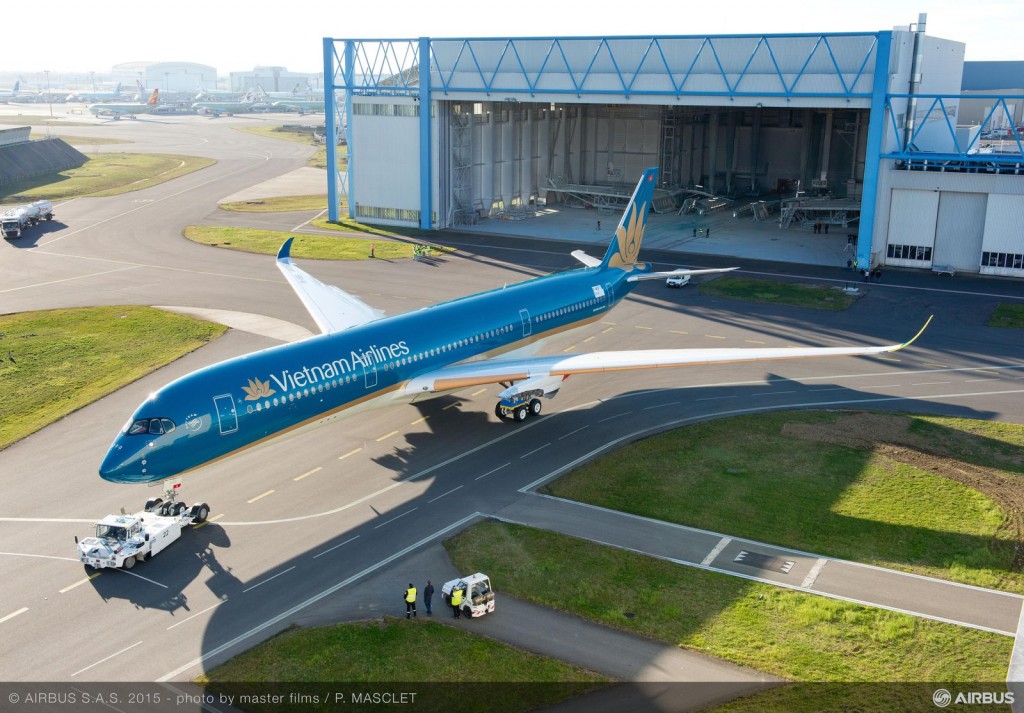Stratasys Helps Airbus Get the A350 XWB Aircraft Off the Ground

One of the first A350 XWB’s to be delivered. The new airplane includes a host of 3D printed parts. Courtesy of Airbus.
Latest News
May 8, 2015
Additive manufacturing (AM) and aerospace go together like peanut butter and jelly. AM brings freedom of design, which results in more material efficient, lighter parts, which in turn helps the aerospace industry build planes that require less fuel and are less expensive to manufacture. It’s everybody’s favorite win-win situation.
Airbus is hard at work putting the finishing touches on the A350 XWB aircraft. Some of those final touches include brining in parts built using 3D printing and, more specifically, parts built using Stratasys systems. According to Airbus, the company used more than 1,000 3D printed parts during the construction of first delivered A350 XWB.
 One of the first A350 XWB’s to be delivered. The new airplane includes a host of 3D printed parts. Courtesy of Airbus.
One of the first A350 XWB’s to be delivered. The new airplane includes a host of 3D printed parts. Courtesy of Airbus.“We are delighted that Stratasys additive manufacturing solutions are being adopted by Airbus for its flagship A350 XWB aircraft,” said Dan Yalon, executive VP, business development, marketing & vertical solutions for Stratasys. “Our additive manufacturing solutions can produce complex parts on-demand, ensuring on time delivery while streamlining supply chains. Additive manufacturing also greatly improves the buy-to-fly ratio as significantly less material is wasted than with conventional manufacturing methods.”
The primary system responsible for cranking out the parts used in Airbus’ design was the Fortus series, and the material of choice was ULTEM 9085 resin for FDM. ULTEM 9085 has been certified for use by Airbus and provides the aerospace manufacturer with a material that provides high strength-to-weight ratio and is FST (flame, smoke, and toxicity) compliant.
Along with a reduction in initial costs associated with airplane construction, use of AM parts can reduce costs for maintenance over the airplane’s lifecycle. Reduced costs are a result of reducing or eliminating the supply chain and costs associated with housing and maintaining replacement parts and materials. If a 3D printed part needs replaced or repaired, maintenance crews can pull up the file and print out the required part.
Below you’ll find a short video about the A350 XWB.
Source: Stratasys
Subscribe to our FREE magazine, FREE email newsletters or both!
Latest News
About the Author
John NewmanJohn Newman is a Digital Engineering contributor who focuses on 3D printing. Contact him via [email protected] and read his posts on Rapid Ready Technology.
Follow DE





